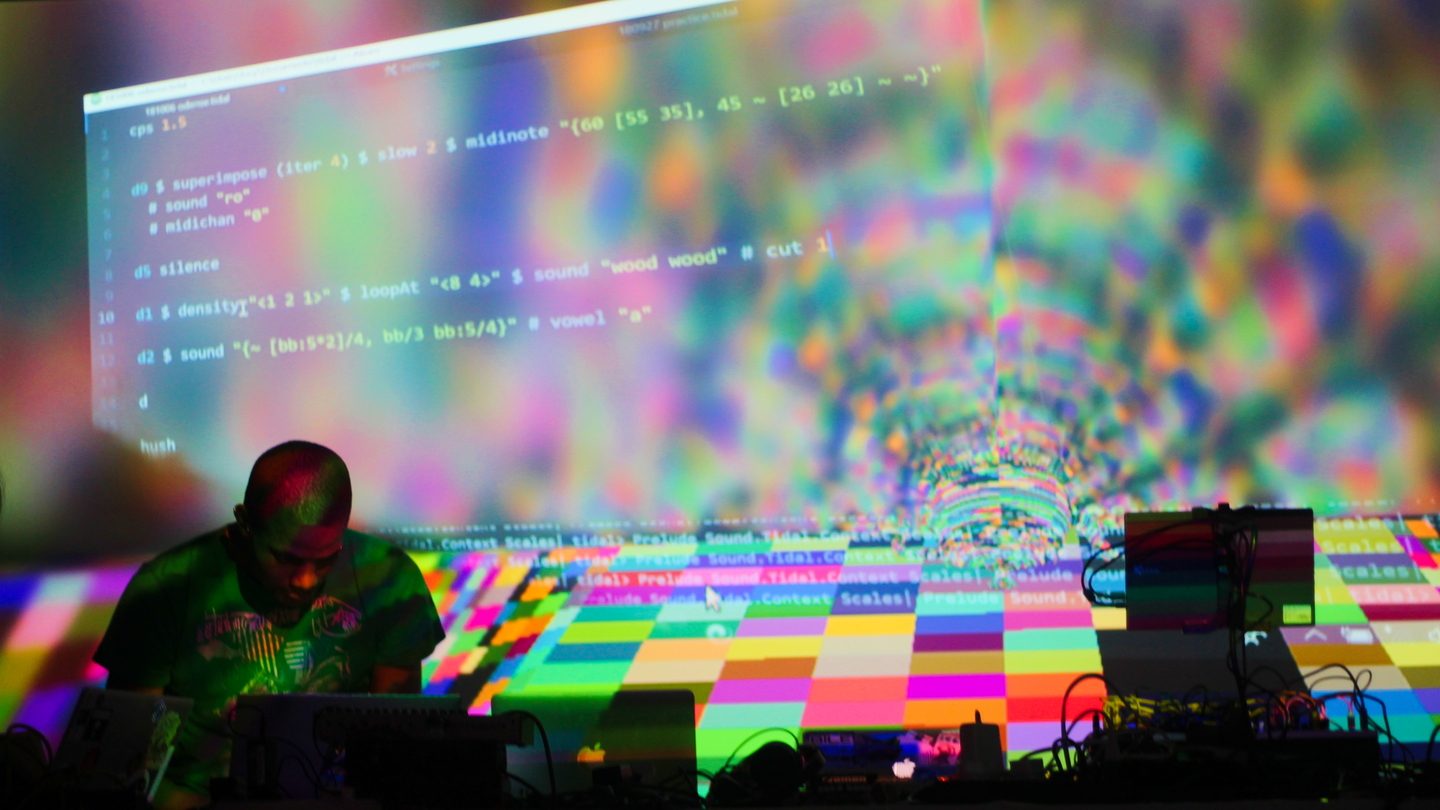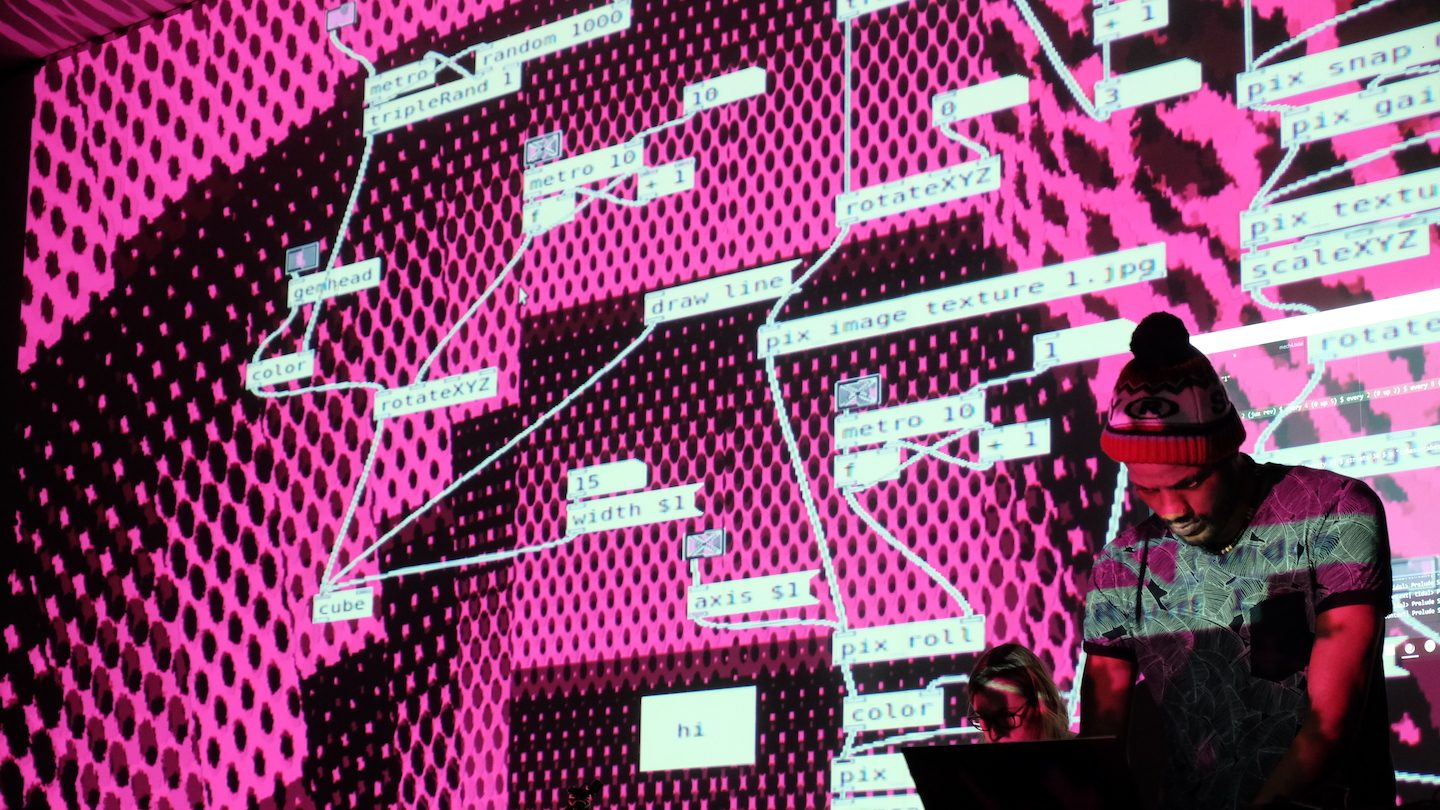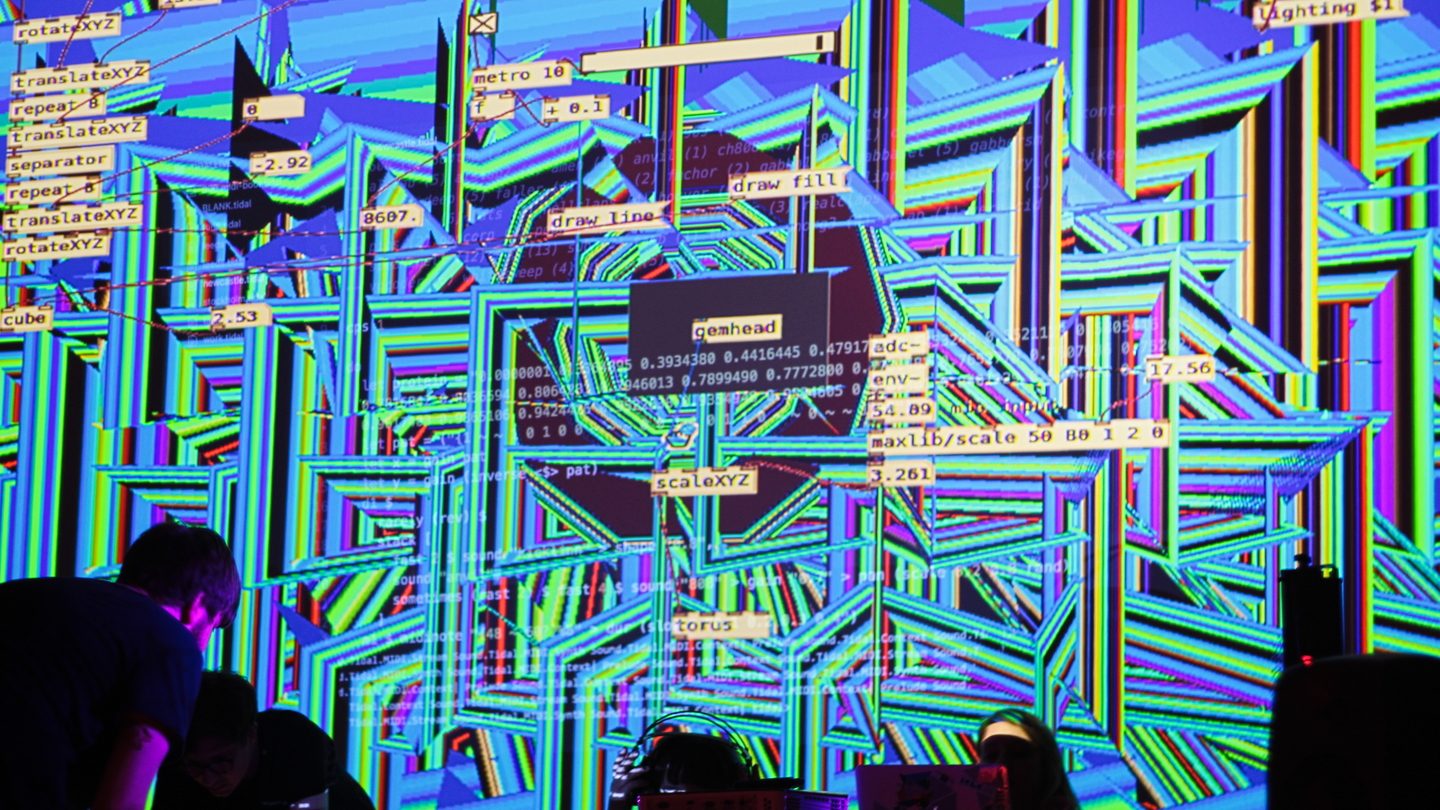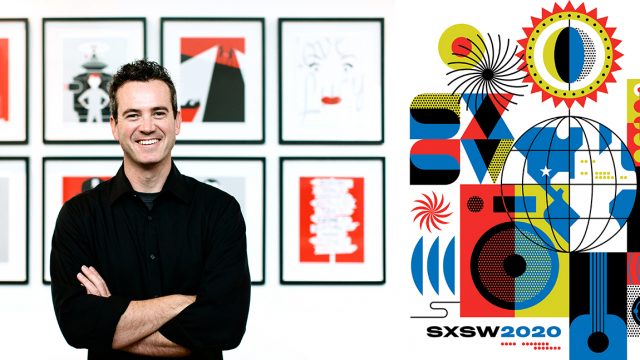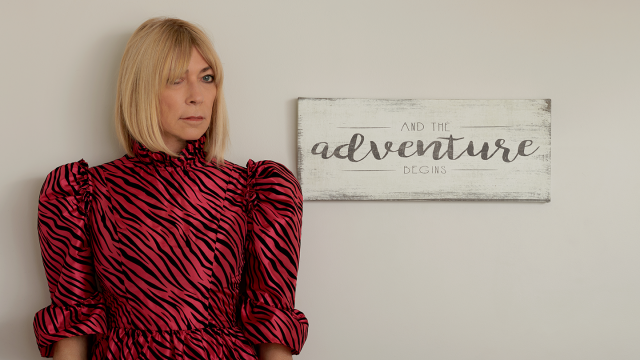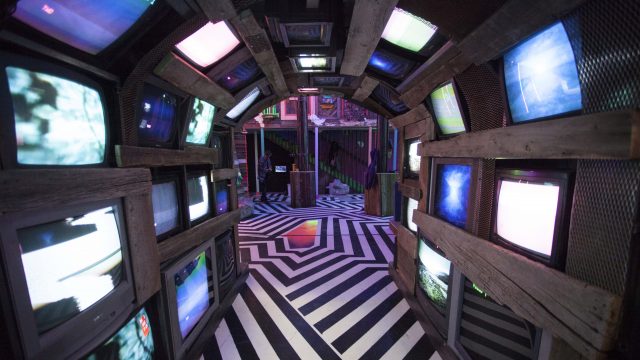Let’s start with a basic question… What is Algorave?
“Algorave is a stupid term. It’s a funny term. It’s a silly term. Algorithm is a term that just is intimidating by its nature. People think algorithms are complicated things, but sometimes they are simple things, like basic mathematics. Algorave makes algorithm as a term a bit more silly, maybe ironic,” explains Joanne Armitage. Armitage is a coder, musician, and lecturer in digital technology at the University of Leeds — and half of the duo, Algobabez, along with fellow SXSW panelist Shelly Knotts.
Algorave is an aural-visual experience built upon the practice of live coding, which is writing and editing code live in front of an audience. Alex McLean, a live coding pioneer, and his friend Nick Collins christened Algorave in 2012.
Armitage explains further: “It’s a variation on this — you show up at a club, art gallery, or someone’s living room. There are usually two people hovering over laptops — a musician and a visual artist. A projector or two throw light on a wall. The performers begin coding, and their code is projected so everyone can see it in real time. A beat starts. An image emerges. People start cheering and swaying to the music as it’s coded piece by sonic piece.”
